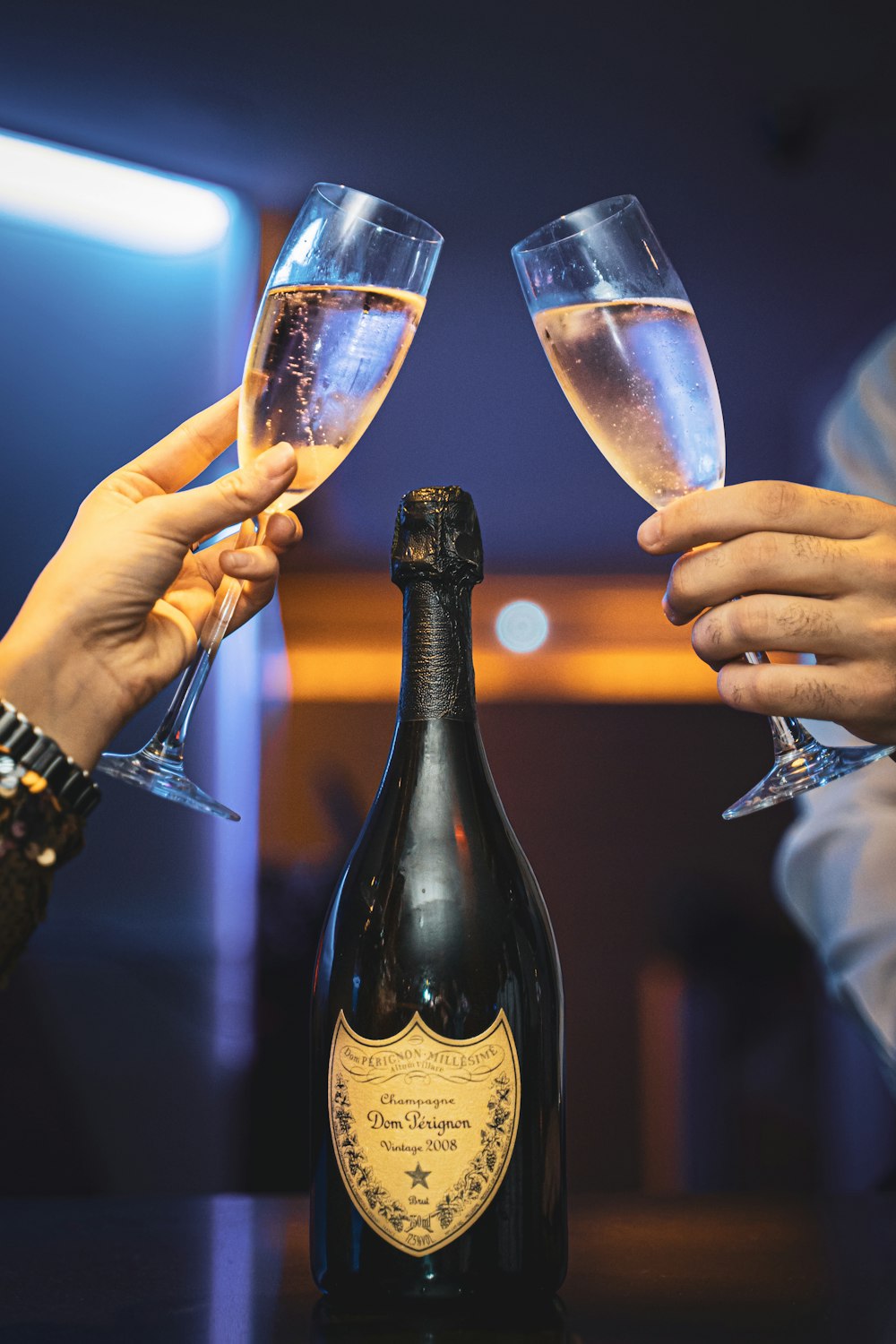- Wine Color/Type
- Top Occasions
- Unique Wines
- Surprise Me!
Sparkling Secrets: How to Serve Champagne Like a Pro
Champagne, the epitome of refinement, is not merely a sparkling wine for New Year's but a symbol of culture and tradition. This guide will escort you through the ceremonial nuances of serving champagne with the grace of a sommelier.
Popping the cork of a good Champagne can be the ultimate form of celebration! (Photo by DaYsO on Unsplash)
The Timeless Charm of Champagne
Champagne's allure is not confined to the clinking glasses of momentous celebrations. It is a companion for all seasons of the heart, as echoed by the adages of esteemed champagne houses. Whether in solitude or amongst friends, champagne complements the full spectrum of human emotion.
Serving Temperatures: A Delicate Balance
Non-Vintage Champagne: Best enjoyed when chilled to a crisp 46°F (8°C), where its vivacity and zest are at their peak.
Vintage Champagne: Deserves a slightly warmer embrace at 50°F (10°C) to unfurl its layered complexity.
[insert:wine:moet-chandon-grand-vintage-brut-champagne-2013]
Mastering the Chill
To achieve the perfect chill, patience rewards the connoisseur with a refrigerator's gentle caress over 3-4 hours. For those impromptu toasts, an ice bucket dip of 15-20 minutes will suffice. You can add a pinch of salt to accelerate the process—a trick straight from the seasoned somms.
[insert:wine:billecart-salmon-brut-rose-champagne-0]
The Ritual of Opening
Sabrage, while theatrical, is best left for the spectacle. The recommended approach is one of subtlety and care. Unveil the foil and wire cage with a tender hand, then, holding the bottle's base firmly, coax the cork to release with a controlled, whispering pop, preserving the integrity of the wine. Here’s a complete guide to how to open a sparkling wine bottle!
Pouring with Poise and Precision
Flutes: Their iconic silhouette preserves the sparkle and directs the bouquet for a focused aromatic experience.
Wine Glasses: Increasingly favored for vintage champagnes, they allow the wine to express its full range of aromatics and complex palate.
Embrace the bottle with your thumb in the punt for stability, and pour with a gentle incline to avoid agitation. Aim to fill the glass just over one-third, to give the champagne room to dance and display its fine mousse.
[insert:wine:jerome-prevost-la-closerie-les-beguines-extra-brut-champagne-0]
A Symphony of the Senses
Visual Harmony: The color palette ranges from youthful straw to golden amber, each shade narrating the wine's journey.
Olfactory Exploration: Embark on a sensory voyage through a tapestry of scents—floral notes, herbaceous whispers, fruit-forward bursts, nutty undertones, and hints of brioche.
Taste Textures: Approach each sip with reverence, allowing the liquid to pirouette across your palate, revealing layers of flavor from bright acidity to creamy richness.
Finish with Finesse: The lingering presence of the champagne's flavors on the palate is a testament to its craftsmanship and pedigree.
[insert:wine:jacques-selosse-initial-blanc-de-blancs-brut-champagne-grand-cru-avize-0]
Champagne is a narrative of luxury, a medium through which we celebrate life's fleeting moments with grandeur. Armed with these nuanced insights, you stand ready to elevate any occasion into a ballet of bubbles and refined taste.
Here's to your enriched champagne encounters!
Latest articles

